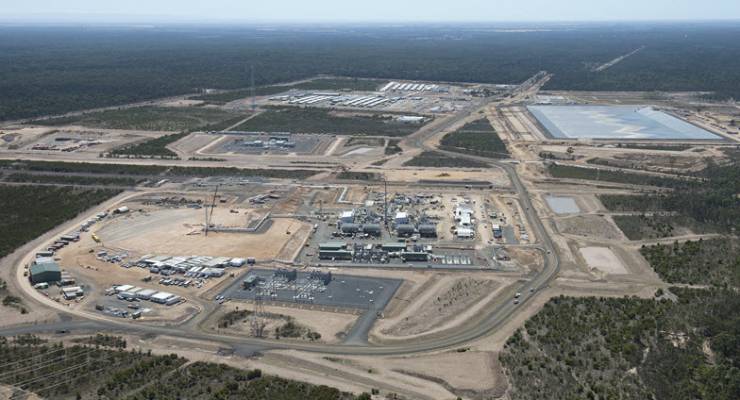
Hard to believe, isn’t it? But it’s true: in the last decade, tens of thousands of square kilometers of Queensland farmland has been covered in gas fields. The export gas rush in Australia is one of the largest and fastest expansions of a gas industry ever seen, anywhere in the world. We are awash with gas. The problem is we are allowing almost all of the cheap and easy-to-get-at gas to be sent overseas.
The gas in some areas is close to the surface, in big reserves all together, where there are no bothersome farmers, aquifers or national parks in the way. That gas is relatively cheap to extract.
But some gas is deeper and harder to get at for all sorts of geological reasons. And that gas is more expensive to extract. Some gas is not just deep and hard to get at, but is underneath valuable aquifers that would need to be drilled through to get the gas. Much of it is on properties of people who don’t want a gas field on their land, or on properties a long way from where the gas is needed. That gas is very expensive to extract.
So, naturally, the gas companies’ first preference is for the easily extractable, cheap gas, and they drill that and sell it first.
The problem is, there is a limited amount of that cheaper to extract gas. Once that gas is gone, only the difficult, expensive-to-extract gas remains.
That was OK when it was just being sold to Australian customers. There was enough reasonably easily extractable, cheap gas to last for decades at least.
The problem began around 2009-10 when the Queensland government allowed a small group of huge mostly global oil and gas companies to build three massive export terminals that essentially enabled them to export as much gas as they liked, as quickly as they liked.
[Gas crisis: warning! warning! warning! Um, what comes next?]
This opened the floodgates and suddenly vast quantities were being sent to Asia, using up the affordable gas very quickly.
Not only did they export coal-seam gas, but because the entire east coast gas market is connected they also started exporting cheap Victorian Bass Strait gas.
In December 2014, the Australian Pipeline Association (APA) reversed the direction of the Moomba to Sydney pipeline so the gas cheap gas from Victoria and South Australia could flow to feed the insatiable Queensland export terminals rather than supply Australian companies.
Not only that, but Australian gas-fired power stations started selling their gas for export rather than generating power, when it suited them. This meant South Australia’s newest gas generator, Pelican Point, was not operating at full capacity during peak times.
Despite being the obvious cause of the problem, the gas industry cries that the solution is to cover even more of Australia in gas fields, starting with Narrabri in New South Wales.
But Narrabri is expensive gas. The Australian Energy Market operator (AEMO) estimates Narrabri gas would cost up to $7.25 per gigajoule (GJs) to extract.
University of Melbourne experts estimate that there are 58,000 petajoules (PJs) of gas in Australia cheaper to extract than Narrabri. That’s enough to last Australian customers for around 100 years at current rates of use.
So there is plenty of affordable gas without opening new fields, the problem is that it’s all been reserved for export by the global gas majors.
Northern Territory and Victorian gas is even more expensive again. Mining research company Wood Mackenzie has estimated that NT gas would cost $12-13-plus per gigajoule to get to market, and there are no proven Victorian reserves, but AEMO estimates “prospective” reserves at $10-plus per gigajoule just to extract.
That means developing gas at Narrabri or the even more expensive and almost entirely unproven gas in Victoria and the Northern Territory is irrelevant to either ensuring supply or bringing down the gas price.
[Another day, another Turnbull gas press conference]
Even if we were foolish enough to develop these reserves, there is absolutely nothing to stop these companies exporting this gas anyway.
When you have a leaking bucket, you don’t run off to get more water; you patch the leak. We still have 100 years of gas that is cheaper than potential NSW, NT, or Victorian gas fields. But the gax exporters are sitting on it.
Every day we allow the gas floodgates to remain open we are losing vast quantities of affordable gas, double the amount used by Australian consumers.
The government’s policy to require these companies to make the gas available to domestic suppliers is entirely justified.
For the longer term businesses and households would be well advised to look at ways of switching from gas. It’s already happening. Households are switching from gas to efficient electrical devises, renewable energy is already cheaper than gas, and even many industries, including Whyalla steelworks, have decided to shift to renewables.
Forcing states to mine gas that is overwhelmingly opposed by their populations is entirely unjustified and will do nothing to solve the problem.
*Mark Ogge is the public principal adviser at The Australia Institute.







Crikey is committed to hosting lively discussions. Help us keep the conversation useful, interesting and welcoming. We aim to publish comments quickly in the interest of promoting robust conversation, but we’re a small team and we deploy filters to protect against legal risk. Occasionally your comment may be held up while we review, but we’re working as fast as we can to keep the conversation rolling.
The Crikey comment section is members-only content. Please subscribe to leave a comment.
The Crikey comment section is members-only content. Please login to leave a comment.